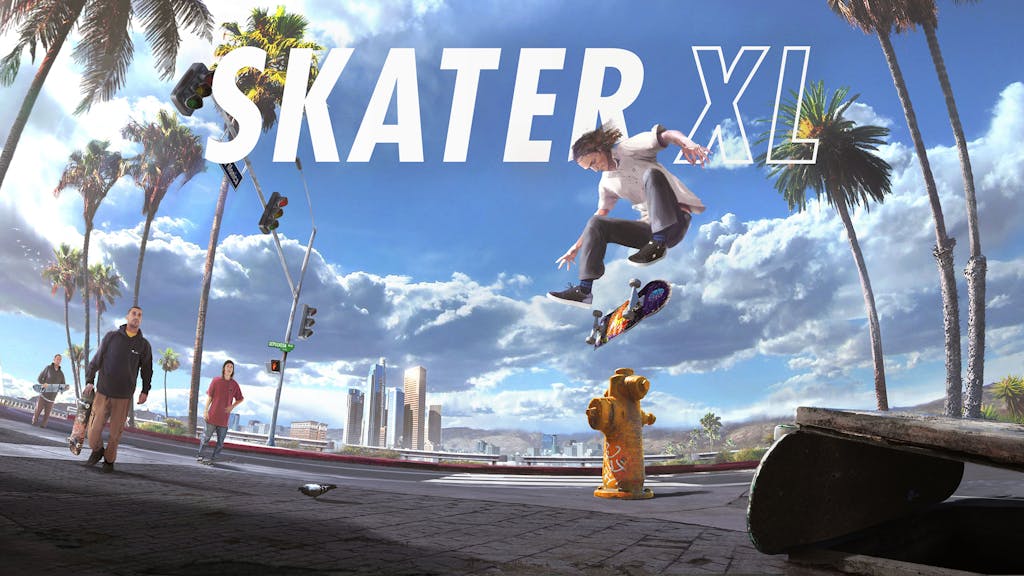
After a barren decade in the category, skateboarding video games are back at the centre of popular culture hype. A high-profile Skate 4 announcement followed news of the Tony Hawk's Pro Skater reboot earlier this year, and with skateboarding set to make its Olympic debut in 2021, the sport's skyrocketing popularity still looks some way off hitting fever pitch. In other words, this seems like a good time to make a skate-centric video game. And this time around, Skate and THPS aren't the only players.
Buried beneath the mainstream fanfare and big-studio teasers is Skater XL, the skater-owned, skater-made video game headed by an Australian developer, Dain Hedgpeth, and his trusty sidekick, the former DC Shoes skate category manager Jeff Goforth. While Skate 4 may still be three or four years from completion, Skater XL is making its way to consoles right now. We caught up with Dain, who is now based in California, and Jeff, Skater XL's director of marketing and industry man, to chat about the game's focus on physics and realism, the divisive control scheme, any rivalries with Session, what the Skate 4 announcement meant for them, and the importance of the community when making a video game in 2020.

BW: The thing about Skater XL which got our attention, at least at first, was how true-to-life the West LA Courthouse felt. Not necessarily in the graphical sense, but the actual environment, the height of the ledges and the space itself genuinely feels like a 1:1 recreation. It seems as though skateboarding games have historically struggled in this regard. How important was it for you to get those spot recreations 100% right?
Dain: That’s correct – the LA Courthouse is actually a 100% recreation, and Poods Park is also a 100% recreation. There’s kind of a line we drew – people are going to appreciate, particularly core skaters, they’re going to appreciate that aspect of seeing a real skate spot you’ve never been to but you’ve seen in a million videos. The ability to jump in and visit that in a virtual world, there’s something really cool about that. We didn’t want to lose that.
So it was a balance between that aspect, and then thinking about all the people we’ve seen in Early Access who have put crazy hours into the game, we really wanted longevity in the spots. We wanted to make sure that, as people maybe went past that initial enjoyment of ‘I’m skating the courthouse’, into, you know, hundreds of hours played, to keep finding new things to do. So the Courthouse is an exact replica, but some of the sites you’ll see in 1.0 have a lot of faithfully replicated spots that have been tweaked, adjusted, and re-jigged in order to make sure it stays fresh and fun. Gameplay is always the top priority. It’s a balance of priorities between having those 100% faithful recreations and also making sure the gameplay still works, and the changes we’ve needed to make in most cases have been pretty small.
It seems like real-life skateboarders were the first priority while developing Skater XL, rather than the average gamer. You guys are obviously skateboarders yourselves. How much time did you spend at places like the Courthouse, Poods, and Downtown LA while ‘researching’ for the game?
D: It’s almost a running joke with how often we talk about needing to get out on our boards more, and actually go skateboarding (laughs). We’ve just been so busy. This is one of the key reasons we built Skater XL, though, because a ton of people want access to skateboarding but you just can’t do it every day. You’ve gotta go out and throw yourself around on concrete and get sweaty and it’s not something that everyone has access to all the time. You get a bit older and get injured or put on some weight or whatever (laughs). Things happen, things change as you get older. I’m in my 30s so it’s a little more punishing.
To the question about locations – we’re all really familiar with Poods, for sure, and we spent a bunch of time down there with a DSLR just shooting photos and getting size references and everything. It’s just an incredible park, really.
Jeff: I was just going to say, too, when we were ideating what spots we should include from Downtown, I’ve obviously been to them all, and been on countless filming missions in LA, so it was pretty easy to pick those ones which stand out. They’re all pretty famous at this point, so it’s not like there are any surprises there, but just having spent a lot of time Downtown I was able to give some good feedback.
D: It’s a pretty cool experience seeing these spots from real life. It’s like meeting a celebrity or something; like ‘wow, I’m at Hollywood High, this is crazy, this set of stairs is famous’.
J: And it’s so funny talking to journalists when they’re like ‘that’s where they do E3!’ They’re all hyped because they recognise the Staples Center.
(Laughs) It’s like ‘no, that’s where Geoff Rowley did the 50-50!’
J: Gaming journalists light up when you get to that area. It’s super funny. They get a slight feeling of what it’s like to be a skater and see skate spots in the game (laughs).
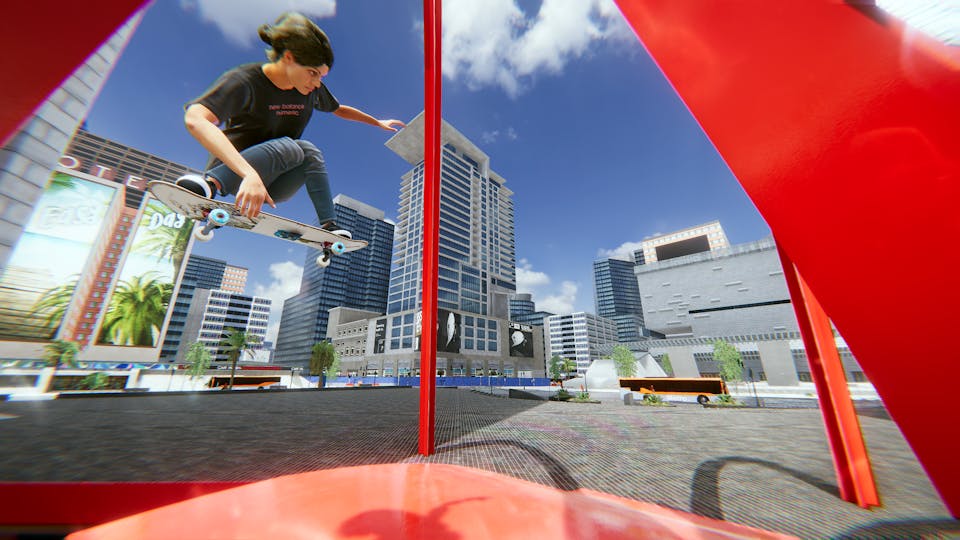
Obviously the control scheme has been a big talking point. You’ve gone for realism, where the front and back feet are controlled by the left and right joysticks on the controller, rather than having pre-programmed buttons or movements locked in. How do you feel about the response? It’s usually the first talking point amongst friends who haven’t played the game, and it’s been a little divisive.
D: I guess we have so much more contact with people who did choose to play the game, that it’s interesting to think about people that didn’t, or haven’t tried it yet. I think there is a range of preconceptions people have before they’ve played it, or even when they’ve tried it for an hour. Sometimes we do see people test it and then refund the game. But I think anyone that gets over the hump of adopting the control scheme – and generally that takes a couple of hours – I think we’ve seen nothing but positivity from that point. But again, that’s skewed towards people who have kept the game and that’s the community that we maintain contact with.
Right. Whenever we’ve posted a Skater XL video, inevitably it ends up with someone saying ‘the controls suck’ in the comments, and then someone else telling them they ‘just need to get used to it’. It looks like people who have actually played the game tend to enjoy the game, and the people who hate it either haven’t played it, or spent 15 minutes with it and decided it sucks.
D: Again, it’s my own baby and we’re going to see things a certain way as the creators, but that is genuinely I think what we’ve seen. Sometimes a misinterpretation of the controls can lead people down the wrong path with understanding how things work. We’ve seen that in testing sometimes; the tutorial in Early Access isn’t as advanced or polished as what’s coming in 1.0. The tutorial only takes a minute or two to get through, but interpreting the ideas the wrong way can send people down a frustrating path. If people have a lot of muscle memory from EA Skate, for example, that can create some behaviours that are unexpected. So I think it’s either people don’t give it enough of a chance, or they misinterpret some things about the controls. And with a better tutorial in 1.0, hopefully we see less of that.
J: Just to add, those people on social media are generally people who haven’t played. What I see people asking is ‘does this have controls like Tony Hawk, or like Skate?’ – as if those are the only two options. The fact that we’re evolving from that, people have a tough time wrapping their head around it conceptually without hands-on gameplay. Once people get hands-on, we see what Dain is talking about. You just have to accept that Skate 3 and Tony Hawk are not the only two control schemes that can exist for a skateboarding game.
Did you ever consider adding an option for ‘Skate 3’ controls in order to broaden the potential customer base? I think I’m right in saying Session has done that.
D: They have. For us, from day one, we sat down and asked a lot of those questions. The resounding answer was to really commit to this control design, and commit to advancing things. Things were done in the past, and they were great steps forward in the genre, but as Jeff was mentioning, anyone that puts in the time – an hour or two – will see that there’s something special here. It’s got more control, it’s a more satisfying experience, it feels more like skateboarding and there’s more depth to it. It’s not about making the old thing better – it’s a new thing. For us it’s a no-brainer. We feel trying to re-engineer things to fit in an alternative control scheme – there’s just no need for that if we got it right.
And when you’ve built a whole game around one particular control scheme, you don’t want to water it down with something else.
D: 100%. The challenges, the level design, it’s all been crafted around the controls, and it’s what the gameplay is all about. Look – you can still buy EA Skate. It’s still on the shelves, if that’s your thing. It’s still there and we’re all big fans of EA Skate and what it did for the genre. But we’ve got a new control scheme and we’re sticking with that.
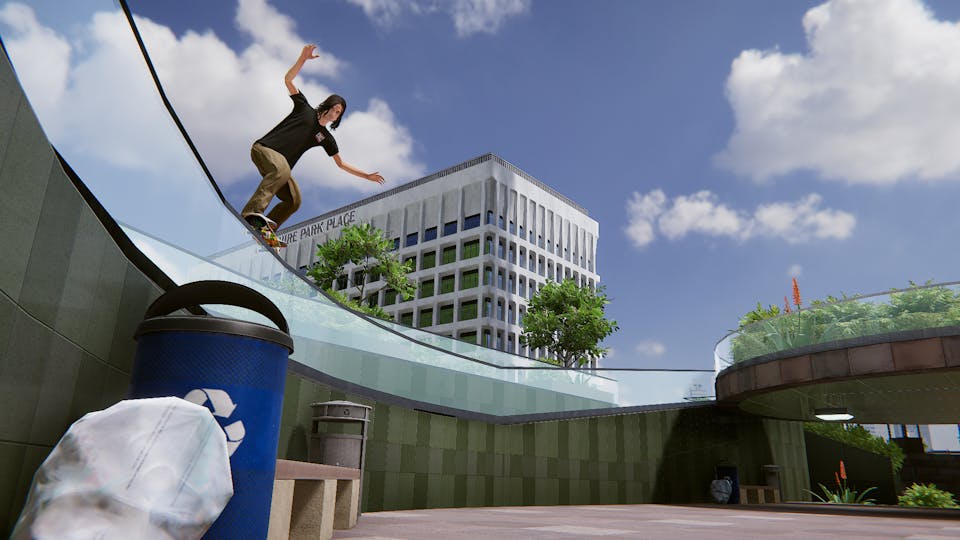
I did mention Session there – Session is doing a similar thing to you guys, in many respects, including with the control scheme. In many ways it feels like the two games are going tit-for-tat. What’s your relationship like with the guys at Session? Fair to say there’s a bit of healthy competition?
D: I think the main product is in the details. Our vision for what Skater XL is, I think it comes from a different place. I don’t want to break down the competitor’s product too much, and on the surface they have a lot of similarities, but the surface is where those similarities end. A game is about how it feels; the whole flow, the learning curve, the interactions. It’s like looking at two first-person shooters next to each other; they might have the same control mapping, but it’s just a mapping. The key thing about Skater XL is that the mapping goes into a physics-driven system. We’ve made something completely dynamic, and it’s totally under user control. We want to create a physics-based skateboarding game, not one driven by animations, and ours is the first skateboarding game not driven by animations. Session’s system… I won’t comment on that, I’ll just comment on our product –
Would you say that Session is less physics-driven, and more driven by animations?
D: Ultimately you’re triggering an animation cycle, and that’s ultimately not what Skater XL does. In Skater XL, you’re controlling the board, and the character is a whole other thing, it’s trying to watch and pre-empt what the board is doing. I did see Session is now going back to the drawing board and they’ve announced they’re re-doing their whole physics system, so it seems like they’re still trying to figure out the core gameplay. That’s what we did in 2018, and we’ve been moving forward ever since. This is us rolling out 1.0, and there’s a roadmap ahead of that. We’ve got a vision and we’re trying to execute it. We’re not trying to figure out what we’re doing 6 or 7 years after the initial game announcement.
Do you think the competition with Session has ultimately been good for you, though? Have they pushed you with what they’re doing?
D: I think for a time. Session was in early access for 3 or 4 years, while we started in stealth mode and got to base very quickly, then Early Access, and then release. We’ve built everything being released now in the last year-and-a-half. They’ve had their Early Access out, it’s now available on two platforms, and I think… For us, we’re launching multi-platform with a full product, and with a lot of stuff coming after that.
And again, I think there’s room for people to play both games. For fans of the genre, it’s nothing but a win to have more games on the market. I just think at the heart of what the games are about, there’s not really anything like Skater XL out there, as far as the core mechanics, as far as the community – I mean, our Discord has 100,000 members on it, if we’re talking about Session I think it was about 5,000 last time we looked. There’s just not the same engagement, there’s not the same passion and creative spirit around Session. I could give you more juicy things to quote if we’re going that angle (laughs), but I think you get the real responses from the fans, and we hear people saying Skater XL is more expressive, more responsive, it feels like skateboarding and you have control over everything. To us, that’s what it’s all about.
I think a lot of people get confused between the games – do you worry about that?
D: Yeah, that happens. We’ve had guys at PAX come up and say ‘we saw your E3 thing!’ and it’s like ‘no, we’re not those guys’ (laughs). It’s basically… I’ve got more thoughts, but we don’t really see anything in the market going in the same direction as us. We see other games based around skateboarding which are trying to capture different things, and I think for players that’s nothing but a win – the whole category is lighting up.
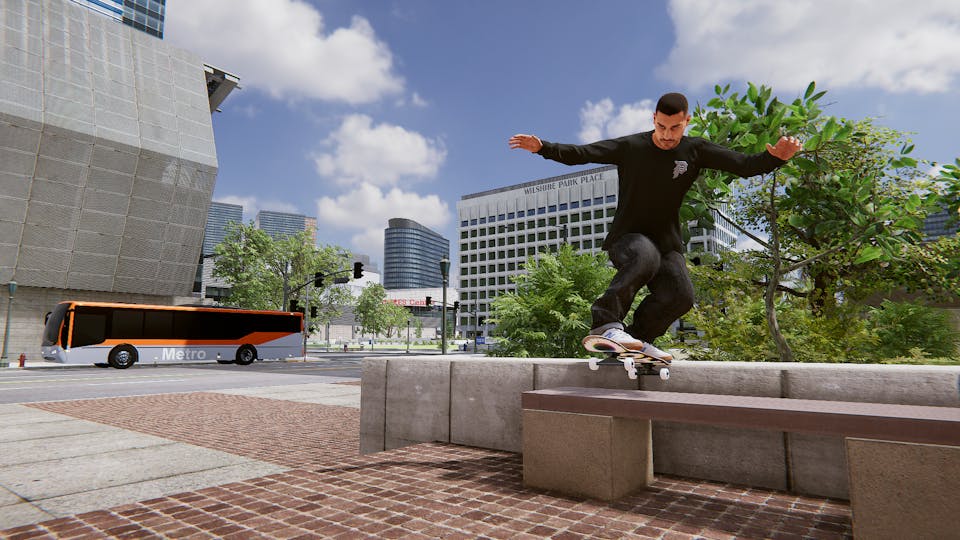
Right – obviously with Skate 4 being recently announced, along with the Tony Hawk’s Pro Skater reboot… Do you see those games as competitors? Has it changed the way you approach Skater XL?
D: Tony Hawk’s? Not really at all. We both benefit from each other I would think. That’s very much a casual game, very much about a different style of fun. If you own either Tony Hawk or Skater XL, there’s zero reason why you wouldn’t also buy the other game.
Skate is an interesting one. Are they a competitor? I would say no, because they’ve just announced the start of development, and three years down the line the whole world will have changed a lot. We’re not in sync with each other as far as launch or timeframes. For the next few years, this is Skater XL coming out and doing whatever it does. It’s hard to avoid a conceptual comparison, and I think we feel like Skate was kind of the middle step towards what Skater XL is – and I know that’s a big statement, and EA is a big company, they know how to make and publish games – but the thing about making skateboarding games is it’s difficult to find the right team. That’s part of why Skate 4 didn’t really happen for a long time. And it’s why when other skate games have come to market – and there has been a few in the last 10 years – they haven’t really been of note. For us, this is really the perfect team at the perfect time, and it’s a dream project for us to craft the skateboarding game everyone’s always wanted.
Do you think the success of ‘early access’ Skater XL influenced the decision to reboot the Skate and THPS franchises?
D: It certainly feels like it (laughs). I mean, I’ve never seen one of the big publishers announce that they are thinking of making a game – usually you build something first and people get excited off that. It certainly feels like given all the build-up to Skater XL’s launch, along with the other activity in the category like THPS announcing a reboot, that it felt like a response driven by something happening in the category. And with Skater XL kind of leading that, and having lit the spark, it definitely feels like their announcement of the game and especially them talking about how they want to focus on community… All these things we’ve been talking about since we started and have executed as a smaller studio. The timing is definitely curious.
Skate 3 obviously also enjoyed a massive upswing in popularity as a result of YouTube and Twitch coverage; people like Pewdiepie started playing the game and all of a sudden they were turning the servers back on, almost a decade after the game’s release. How important is that online streaming community for Skater XL – especially as a smaller studio?
D: There are so many parts to what brings people to new material – what keeps people engaged – there’s so many pillars to that. And that includes streamers for sure. There are some guys who are core in the community and do lots of streaming and we work with those guys when we make announcements and do new things. But it’s certainly across all platforms as well – social media, YouTube, each one brings a different aspect. So I wouldn’t single out streaming alongside all the other places people engage with Skater XL content.
J: I would second that. There’s all these social channels where content consumption happens, whether it be for a video game or actual skateboarding video parts. There’s a unique ecosystem built around gaming and also skating, and that whole YouTube skate generation that’s evolved over the last few years. We have an interesting crossover with being a skateboarding game that’s super authentic to skateboarding, but it’s also a game, so it’s going to a different audience as well – not just skaters. And the fact is that streamers make super entertaining content, and play the game super well, and it’s fun to watch. It’s an important channel, but again, it’s just one.
I think it’s an interesting difference. If information comes through the official Skater XL social channels, that’s you guys pushing the content. Whereas with streamers, you’re giving the game to someone else, the audience is getting someone else’s opinions, it’s someone else playing the game who maybe isn’t as familiar with it. For me, I think independent streamers are important because you’re getting authentic opinions. I certainly discovered the game through streamers at first.
J: Absolutely. And with the explosion of the modding communities, it’s been a fascinating discovery mechanism for a lot of people to find out about new mods and where to get them and how to install them. It’s been a really interesting discovery tool, particularly around modding, and has turned a lot of people onto the game as you said.
Obviously the community in general is a big part of Skater XL, perhaps the biggest divider between Skater XL and Session at the moment, at least from a broader perspective. You’ll be featuring community-made maps in the full game at release, right? And some of those community creators ended up getting jobs with you?
D: That’s correct. Two of the creators are now on the team. But on top of that, we work closely with people in the community to explore new features, testing and getting feedback, and creating content that goes out to the public. We have so many Discord channels with modders and even guys creating video parts; everyone’s in the mix. We keep saying it, but even though we’re the developer, we’re just one part of this interconnected web that keeps growing. We’re only one part of what Skater XL ultimately is.
Maybe explain a bit more about the modding capabilities of the game. Are players able to create their own levels?
D: Yeah – and this is an interesting thing, because there are barriers to modding. We haven’t created user-generated content tools within the game, and there’s no level editor. All the mods you see are people that have been motivated and passionate enough to take up Photoshop, to take up Blender, to pick up a skillset so they can create their own home skatepark out in the middle of Russia somewhere, or their favourite street spot. I think we have over 15,000 mods listed on the Discord, and that’s all driven by that desire for expression and creativity within the community. We’ve basically given people this musical instrument – the core game and gameplay – and out of that, people want to create. Everything is built around that gameplay as a foundation.
J: I think our transparency and humility has been a big part of that. Just really listening, talking, and taking the time to respond to social media comments and taking constructive feedback. I think it’s humanised the game a little bit, you know? We’re personable people and we’re here to listen and affect change and include the community. I think that’s a big part of what helped it grow so much, creating that positive environment that’s open to conversation.
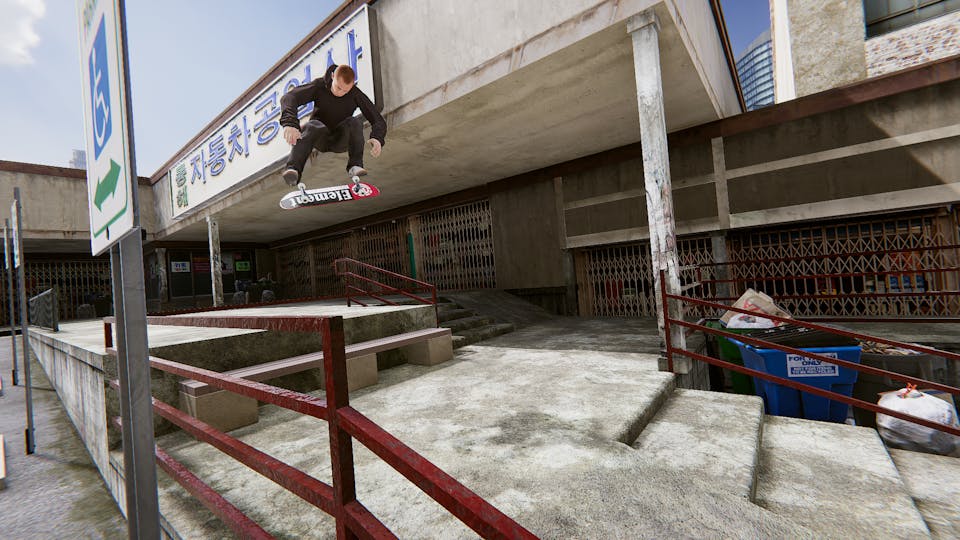
Does it bother you that people tend to linger on the graphics of the game rather than the gameplay itself? Every time we post a Skater XL video, it seems like an argument about graphics inevitably ends up kicking off in the comments. To me, when you’re focused on actually playing the game, the graphics aren't such a concern. But for a lot of people it’s the first thing they look at, and they consider it the most important.
D: For sure. It comes back to where our focus is.
The first thing to note, as we’re moving towards 1.0, is that things are still being completed and polished, so hopefully people find that on launch day things are looking a little better than what they’ve seen. But also, you know, this is a decided position that we’re focused on the core gameplay and all of the things people really want in a skating game. People ask if we have a story mode, and for us that’s a great component for a different type of skateboarding video game. This is a little closer to giving people access to a digital version of skateboarding itself. And to do that, to keep it cross-platform and to build it with a small team, our focus is on gameplay over everything. If we keep the right balance between visual fidelity and gameplay responsiveness, that puts us in a much better position to produce more content and adapt the game to do the things we want to do down the line.
You’ve managed to get real-life, big-name pros to feature in the game: Evan Smith, Tiago Lemos, Tom Asta & Brandon Westgate. What’s the process for getting people like that involved, and how receptive were they to the idea of being in the video game?
J: For me, having been in the industry – I ran the skate category at DC Shoes so I’ve had prior relationships with these guys, and that was definitely part of it. They were all keen to be a character in a video game. I think it’s obviously so rare for that to happen. I think they see it as that opportunity to grow their name and that stature in the industry and the broader culture.
With Tiago and Evan, I’ve been close with them since my days at DC. And Tiago just went to New Balance, but we’ve travelled the world together, so those were no-brainers. They rip and they’re obviously legends. I’d worked with Tom Asta’s manager too, and I just hit him up and asked if Tom would be into it, and he was. The only hesitation was around ‘are you going to be true to skateboarding?’, and I think that was erased pretty quickly. So it wasn’t so difficult getting them onboard.
Any skaters you tried to get involved but weren’t able to?
D: I think we had an ideal shortlist of 6, and we wanted 4 of them. We pretty much got the dream team from the outset. We certainly want to work with more skaters moving forward, but it’s quite a process to go through – doing the photogrammetry, it really takes months and it’s a lot of work to get a skater into the game and all rigged-up and animated. I think it’s a good base at launch, we’ve got these 4, we’ve got the customisable skaters, we’ve got all the gear from 30 brands – but there’s a bunch of skaters that would be cool to work with down the line.
How does it work with those sponsors and real-life product being implemented in the game? Is that a mutually beneficial arrangement? How did you decide which brands to include?
D: I won’t speak to the terms of the arrangements, but I think it’s an interesting subject. Typically in a video game, if you had a brand putting a product in there, it’s a subtraction of value for the player. The brand is trying to get in front of an audience, it’s usually kind of interruptive, you’re putting in billboards or interstitial ads. For us, it’s a much more organic, natural thing. There’s really a lot of things that we’re both able to do, with both brands and pro skaters, and they’re keen to do it. Given the game is so true to skateboarding, brands are interested. It’s a fascinating new space.
J: Skateboarding is getting a lot savvier with its advertising and marketing. For a long time, it had been really driven by magazine ads, and web banners, that sort of thing. But this is a new outlet, it’s something that’s pretty rare, and people are really stoked. For instance, we’re putting Tiago’s New Balance shoe in the game before it’s available to the public; it’s part of their launch strategy for the shoe.
Is this console release considered a final version of the game, or should we expect further updates moving forward?
D: The console release is considered a complete version of the game, but by no means the end of development or the end of advancements. Sometimes that can imply that there’s not a full set of content, but we’re happy to stand behind this and we think this is a really great launch. We think people will be very happy with paying the money and buying 1.0, but we see a lifespan for Skater XL going on years into the future. There’s so much potential. Games are different now than they were 10 years ago; you can update the product, you can keep releasing things and adapting and utilising the community with mods and bringing the game to life, long after the first release.
Any plans to include Australian levels or areas in future iterations of the game?
D: Everything is possible. Me, coming from Australia, I’m familiar with Australian spots. But we have to make decisions based on the community – Australia’s on the radar, South America, Europe, Australia – they all have unique terrain and really passionate skateboarding audiences. We’re definitely considering it.
Skater XL hits PS4 & Xbox One on July 28
Follow us on Facebook for further news & updates
It looks like you might be visiting BOARDWORLD from outside of Australia. Please note: we are an Australian store, and all orders will be charged in Australian Dollars (AUD). However, you can change the displayed prices to another international currency more relevant to you. Any displayed prices other than AUD are estimates only, based on current exchange rates. You will be charged in Australian Dollars at checkout.